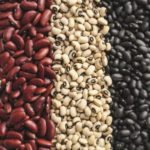Is margarine healthier than butter?
Margarine has become a major part of our diet and has overtaken butter in average daily consumption all over the world. In the rural world, butter is still more popular. It has therefore become a topic of debate as to which one of these is better.
Butter is a dairy product made from the fat content of milk. It is made by agitating fresh or fermented milk. It is used as a spread, with cooking, baking, and frying. Margarine looks similar but differs on many accounts. It was created as a substitute for heavy butter. It contains plant oil and water and is, therefore, a vegetarian food. It is also used in a similar way as butter. Though both butter and margarine contain about 80% fat, the ratio of saturated versus unsaturated fat varies. Low-fat margarine products are also available in the market. Let’s find out if margarine is healthier than butter.
Butter vs margarine – the differences
Butter is a natural product derived from animal sources whereas margarine is artificially made from plant oils and is purely a vegetarian product. Butter contains more saturated fats. Table butter contains 50% to 60% saturated fat. Though in small amounts it is required by the body, excessive consumption of saturated fats results in raised LDL or ‘bad cholesterol levels in the blood. This in turn increases the risk of atherosclerosis, hypertension, ischemic heart disease, and stroke. Excessive saturated fat consumption is also linked to childhood obesity and its associated complications of type 2 diabetes mellitus, obstructive sleep apnoea, and the diseases mentioned above.
Margarine on the other hand contains healthier polyunsaturated and monounsaturated fats. The saturated fat content of margarine is about 20 to 30 % depending on the preparation. This does not pose risk for atherosclerosis-related diseases as much as posed by excessive consumption of butter. So, replacing butter with margarine may be a smart idea for a healthy body. One can maintain a healthy and fit cardiovascular system. Most margarine is made from vegetable oils and therefore does not contain any cholesterol. On the other hand, 100 grams of butter contain about 175 mg of cholesterol.
Oil types in margarine
The vegetable oils used for making margarine include canola oil, sunflower oil, safflower oil, olive oil, coconut oil, palm kernel oil, and hydrogenated oil. Margarine made from liquid oils like canola and sunflower oil contains lesser saturated fatty acids than hydrogenated oils. This also means that softer margarines are healthier than firmer ones and contain 10% to 20% saturated fat.
Margarine contains unsaturated fatty acids and its consumption helps in reducing LDL cholesterol and increases HDL or good cholesterol.
Omega-3 fatty acids
These are essential fatty acids as they are not manufactured in the body and have to be taken orally. They are present in animal fats and hence margarine is deficient in these essential fatty acids except for one variety called alpha-linolenic acid, which is found in vegetable oils like flax oil, hemp oil which are added to high-quality margarine.
Omega-6 fatty acids
These fatty acids are also essential for good health and include linoleic acid found in vegetable oils like hemp oil, corn oil, sunflower oil, and cottonseed oil. Therefore margarine is a rich source of omega-6 fatty acids. It is important to maintain a healthy ratio of omega-6 to omega-3 fatty acid consumption. Ideally, it should be 5:1 to 10: 1 between omega-6 and omega-3. Since margarine contains a higher ratio of omega-6, it may mask the good effects of omega-3 fatty acids. So choose your margarine carefully.
One has to choose wisely and read carefully before buying food. The experts recommend buying soft margarine and not regular butter or hard margarine. Between the two, margarine is a safer choice though there is no harm if butter is consumed in moderation.




























